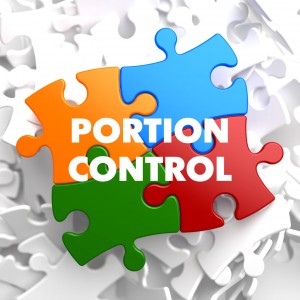 During the holiday season I do my best to keep things simple and I try to maintain a level of balance in my life, sticking to my healthy diet and lifestyle routines and not overindulging in food, drink or shopping. Below are some great tips to help you avoid “Holiday Burnout”.
During the holiday season I do my best to keep things simple and I try to maintain a level of balance in my life, sticking to my healthy diet and lifestyle routines and not overindulging in food, drink or shopping. Below are some great tips to help you avoid “Holiday Burnout”.
Let me take this opportunity to express my deep gratitude for all of the blessings in my life. Wishing everyone a very happy and healthy Thanksgiving.
Liesha
Portion Distortion
Food and drink portions have increased dramatically since the 1980’s. Even recipes list larger serving sizes than ever before. In the 1960’s version of The Joy Of Cooking, a brownie recipe served 30- now the exact same recipe serves only 16!
The allure of a “better value” has sucked us into buying large quantities of huge portions on a regular basis. The effect on waistlines everywhere has been catastrophic. Most people encounter over sized portions every day.
Are you a member of the clean plate club? Although your parents may have encouraged you to finish all your food when you were younger, modern instances where this is healthy or necessary are few and far between. How much we eat is all too often dependent on how much we are served. The more on our plate, the more we eat – bigger portions can cause people to eat 30%-50% more than they usually would.
How do your portion sizes measure up?
If you compare portion sizes today to what they were 20 years ago you’ll come to learn why our waistlines have been consistently expanding. Pre-packaged and restaurant foods are frequently served in large portions, and portion sizes just keep growing! Let’s see how your portion sizes measure up – the following chart provides recommended portion sizes for various food groups.
Portion Control Tips
Use smaller containers. Separate leftovers into single serving containers so you’re less tempted to eat all the remains.
- When cooking at home, make enough vegetables to fill at least half your plate. This will help control your grain and protein portions.
- Have a small salad or a glass of water before your meal. It will curb your appetite and give you a sense of satiety.
- Split an entree. When eating out, ask a friend to share a single entree or set aside half the plate to be packaged for leftovers.
- Eat slowly and consciously. It takes time for the body’s hunger signals to shut down after eating, so wait about 20 minutes before going back for seconds.
- Buy single serving snacks or portion into individual bags. You’re more likely to overeat while snacking from large containers.
- Keep seconds out of sight. Leave the food in the kitchen to avoid refill temptations.
- Have smaller meals throughout the day. This will keep you satisfied and decrease the urge to eat large portions at traditional mealtimes.
The Perils of Supersizing
Eating too much food in one sitting is hard on your body. Here’s why:
- Food is meant to be spread throughout the day. Overdosing on too much food at one time causes pain, upset and sluggish digestion.
- A surge of glucose is released into the body. Your pancreas has to work overtime, pumping insulin through the body to absorb all that extra glucose. This can make you feel spacey, weak, irritable or headachy.
- Thinking there is some type of emergency, your adrenal glands go into “fight or flight” mode and release adrenaline and cortisol, which is the body’s natural response to stress.
- When your blood sugar levels finally plummet, you experience wicked cravings for more food – specifically simple carbs or sweets.
- Research has found that immune system function is affected for at least five hours after consuming large amounts of simple carbohydrates.
[su_button url=”http://archive.constantcontact.com/fs111/1103390640818/archive/1122631863481.html” target=”blank” style=”soft” background=”#45af00″ size=”4″ center=”yes” icon=”icon: heart”]Click Here to Read the Full Newsletter[/su_button]


 Use smaller containers. Separate leftovers into single serving containers so you’re less tempted to eat all the remains.
Use smaller containers. Separate leftovers into single serving containers so you’re less tempted to eat all the remains.